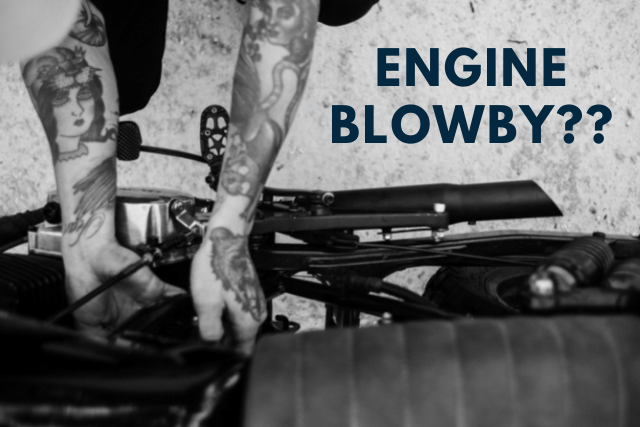Engine blowby is tough to notice. And even tougher to decide whether it is normal or abnormal. As long as it’s not too much, I don’t mind it on my motorcycle.
So, what is an engine blowby? The fuel mixture leakage from the engine combustion chamber to the crankcase along the cylinder walls is called an engine blowby. Some degree of engine blowby is normal since no engine is sealed completely tight. Only if the engine blowby is too high, it is a matter of concern.
Now that we have a brief idea of engine blowby, let’s dig into its causes, symptoms, and solution.
What is engine blowby?
If the fuel mixture in the engine combustion chamber trickles down to the crankcase, it is called engine blowby.
The fuel mixture trickles down along the gap between the piston and cylinder walls.
In other words, the fuel mixture leakage from the engine combustion chamber to the crankcase along the cylinder walls is called an engine blowby.
The fuel mixture leaks through the gap between the inner cylinder walls and the piston and piston rings.
One key thing to note here is all engines will have some engine blowby to an extent. This is because the inner cylinder walls and the piston are not completely sealed.
There needs to be some gap, i.e., clearance between the cylinder and the piston so that the piston can easily move up and down.
And to ensure the clearance between the piston and the cylinder walls does not lead to leakage, piston rings are used.
The purpose of piston rings is to close the gap between the cylinder walls and the piston and ensure that the fuel mixture does not enter the crankcase.
But there will always be some teeny tiny amount of gap that allows some amount of engine blowby. There is no perfect seal. This is fine, not a biggie.
But, when the engine blowby is too much, i.e., the fuel mixture leakage is too high into the crankcase, then it’s a concern.
Engine blowby causes
Engine blowby to some degree is unavoidable in every engine. So, if there are only small amounts of blowby you need not worry about it.
But, if there is too much of a blow-by, then there is a reason for concern. Here are the main engine blowby causes that you need to be aware of:
- worn-out piston rings
- damaged cylinder walls
- defective or damaged pistons
#1: Worn-out piston rings
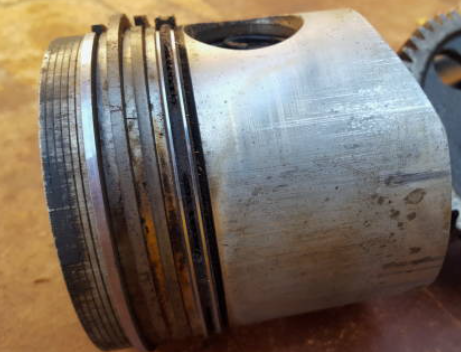
Worn-out or bad piston rings will provide a gap between the piston and the cylinder walls for the fuel mixture to flow through.
The combustion gases or the fuel mixture will easily slide down along the gap and enter the crankcase.
That’s why having good and robust piston rings is important to minimize engine blowby.
The reasons for worn-out piston rings can range from poor oil quality to the bad oil filter to the air filter letting in the dust. You must take care of bad piston rings since they not only result in engine blowby but can also cause issues in the engine.
#2: Damaged cylinder walls

Damage or irregularities in the cylinder walls will lead to a higher clearance between the walls and the piston.
The combustion gases or the fuel mixture can easily trickle down to the crankcase.
In addition, problems with inner cylinder walls can also harm the piston. Too much cylinder wall damage, piston slapping can occur or the piston might get damaged as well.
#3: Defective or damaged pistons
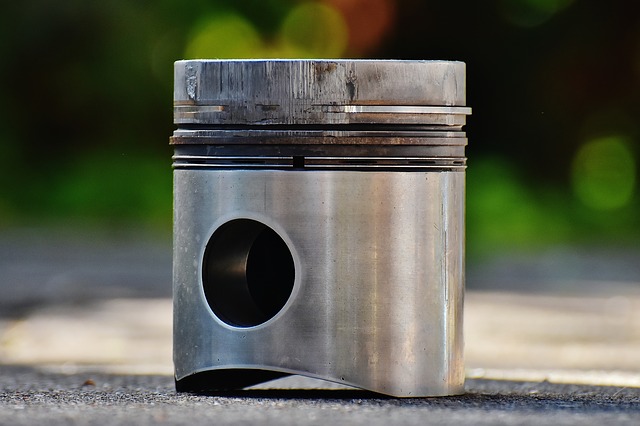
The last and probably the least probable culprit for engine blowby is a damaged or defective piston.
Usually, high amounts of engine blowby are caused by either of the above two reasons – damaged piston rings or the inner cylinder wall.
But, a defective piston is a probable cause for engine blowby as well.
If the piston wears out or has defective grooves, they start widening the clearance between them and the inner cylinder walls. Thus, allowing the fuel mixture to flow into the crankcase.
How to know if the engine has Blowby?

We now know what is an engine blowby and what are the causes. Let’s look at the symptoms, how to identify and how to confirm if there is engine blowby in your motorcycle or car.
Symptoms
- Low engine oil level: when the fuel mixture and the combustion gases leak into the crankcase, they mix up and burn the engine oil. This leads to lower oil levels, which you can check through the dipstick.
- Black soot in the exhaust: Many motorcycles have their crankcase connected back to the carburetor, mostly via the airbox. As a result, the oil burned because of the combustion gases, flow through the chamber and exhaust, forming a black deposit on the end of the exhaust.
- Power loss: Fuel mixture leakage causes loss of compression in the combustion chamber as well as the loss of fuel for combustion. Both combined lead to a power loss for the engine.
- Low fuel economy: Lots of fuel leakage in the engine blowby leads to the wastage of fuel. This in turn causes low fuel economy in your vehicle.
Testing
The best way to test engine blowby is to conduct a compression test on the engine.
Depending on the bore diameter, stroke length, fuel system, and engine model, the optimum pressure varies. So conduct a compression test on the engine. If the pressure, usually measured in psi, is lower than the optimum pressure, there is engine blowby.
Once you confirm the engine blowby, the next step is to determine which part needs to be addressed.
Check the cylinder. Most cylinder walls have cross-hatchings on them. If you notice scratches or shiny surfaces over crosshatching, most likely the cylinder is damaged.
On the other hand, if the piston’s outer surface has scratches and damages, then the piston is the problem component and needs to be replaced.
If neither the piston nor the cylinder is damaged, most likely piston rings are the problem. And you have to replace the piston rings. Specifically, the compression rings.
How does blowby affect engines?
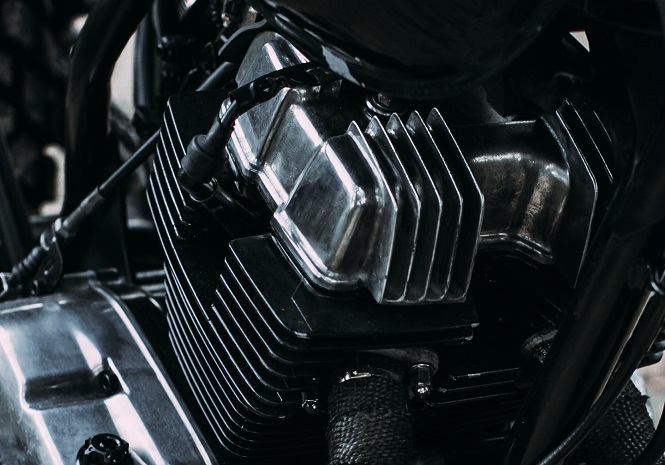
Engine blowby mainly affects the engine efficiency and also the engine oil by contaminating it. Here are the major blowby effects:
- Loss of compression on the piston: with the fuel mixture leaking because of blowby, the pressure in the combustion chamber decreases as well, resulting in low compression on the piston.
- Engine oil contamination: fuel mixture trickling into the crankcase will eventually mix with the engine oil there, thus contaminating the oil. The engine oil will start losing its lubricating properties and becomes viscous with more contamination by the fuel mixture.
- Low engine power and efficiency: with the loss of pressure on the piston, and the loss of fuel mixture through leakage, the engine efficiency goes down and the power output is reduced as well.
How to fix an engine blowby?

This needs a disclaimer. All engines have some degree of engine blowby. It is not a big deal and you can’t avoid it.
Only when the blowby is in a higher amount, should you go for addressing it.
Now, let’s start with the solution and preventive measures for high amounts of engine blowby then.
Solution
To address the engine blowby problem, you need to find the root cause for the engine blowby.
If the problem is with the piston or the piston rings, you have to replace them. Replacing piston rings or piston can be quite costly.
If the cylinder walls are the problem, you have to rebore the cylinder. If the walls are too much damaged, you might have to replace the engine itself, which might be a rare case.
Either way, these solutions are costly. Replacing or repairing any of these parts involves disassembling the engine parts. So be prepared to shell out some cash here.
Preventive measures
You can use certain measures to prevent high amounts of engine blowby. Here are a few dos and don’ts you can follow to avoid blowby to a large degree:
- Use high-quality engine oil. Don’t cheap out and invest in some good oil type.
- Ensure that the oil levels are not low. And change the oil periodically.
- Make sure the air filter and the oil filter are clean. If not clean them or replace them.
- Tune the carburetor for the right air-fuel mixture.
- Check the engine compression every time you take your motorcycle for servicing.
Again, these are preventive measures and to a large extent, should help in avoiding high engine blowby.
How much blowby is normal?
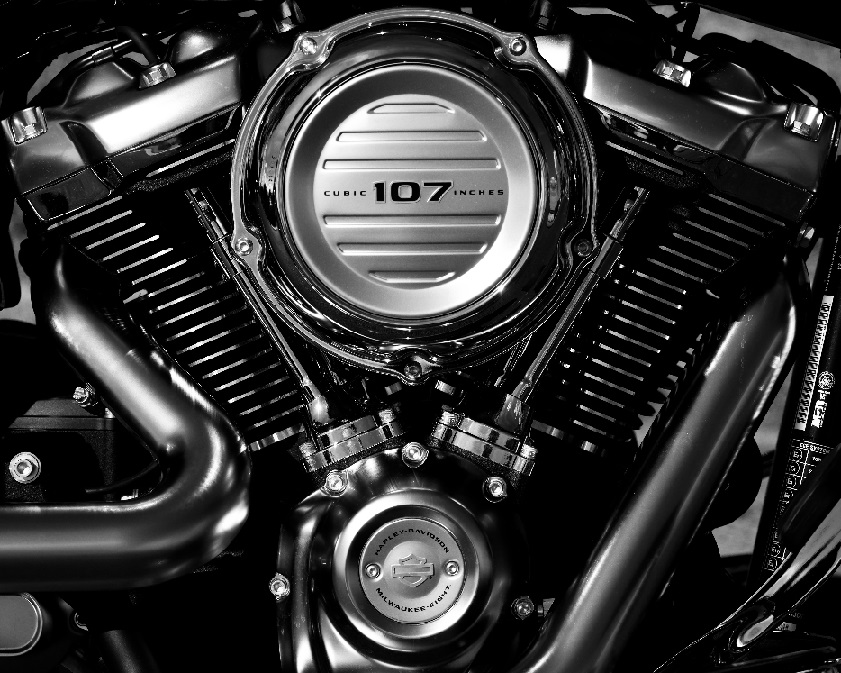
This is tough to answer. It depends heavily on the type of engine, how much is the bore diameter, piston stroke, engine type, etc.
A turbocharged engine will have a higher blowby than your normal engine. Similarly, high compression engines will have a slightly higher leakage as well.
You can try a leakage test to monitor the engine blowby since it is a better measure than the compression test.
But, in the end, it is tough to have a quantified normal blowby for an engine since it varies on so many factors.
To Summarize
- If the fuel mixture in the engine combustion chamber trickles down to the crankcase, it is called engine blowby.
- Some degree of engine blowby is normal since no engine is sealed completely tight. Only if the engine blowby is too high, it is a matter of concern.
- The main reasons for engine blowby include – worn-out piston rings, damaged cylinder walls, and defective or damaged pistons.
- Symptoms of engine blowby – low engine oil levels, black soot in the exhaust, reduced engine power, and low fuel economy.
- You can test for engine blowby either through the compression test on the engine or the leakage test which better monitors the engine blowby.
- High amounts of engine blowby result in engine oil contamination, low fuel economy, and low engine power and acceleration.
- To address engine blowby, you need to find the root cause. If the culprit is the piston or the piston rings, you need to replace them. If the cylinder is the problem, you might have to rebore the engine cylinder.
